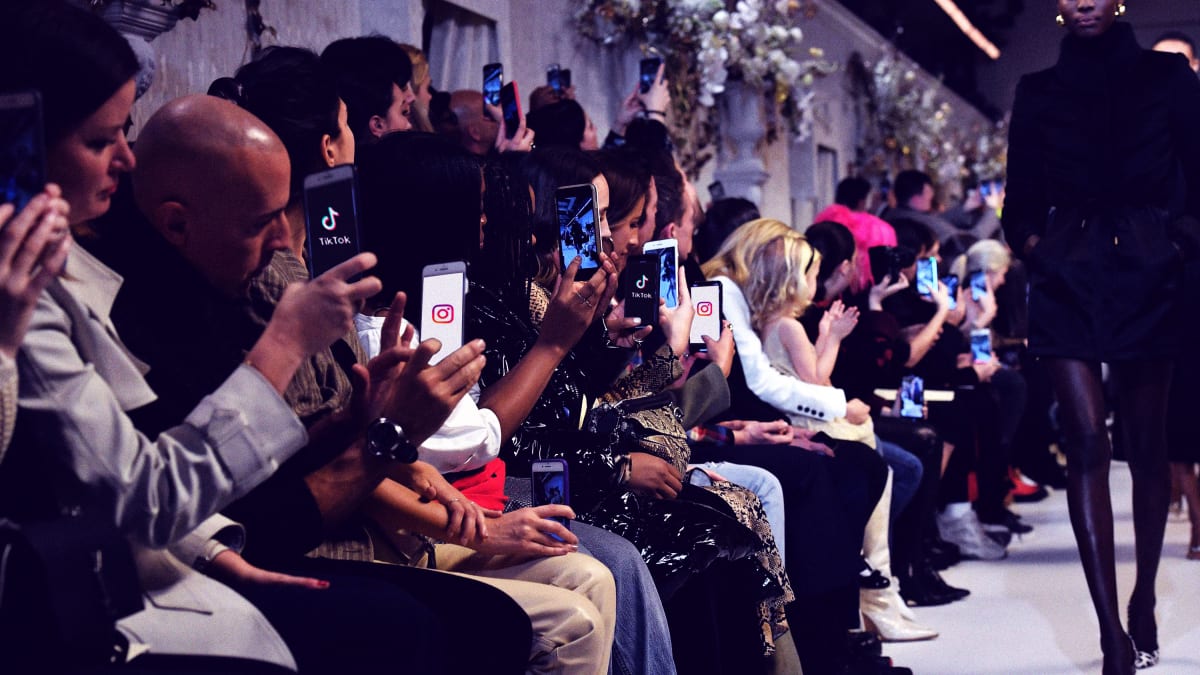
Fashion analytics allows retailers to forecast the demand for their products. It works by tracking the items that consumers buy online and then analysing this data. This data can be used to help retailers determine which items will be most popular and which items will become obsolete. This data allows retailers to reduce prices and remains competitive. But implementing fashion analytics can be challenging. This article will discuss how you can leverage big data to aid fashion analytics.
Fashion analytics: Data integration is vital
The benefits of big data for fashion companies are many, including a more personalized customer journey and better-targeted products. Consumers must trust that their data will only be used in a responsible manner and with their consent. This is possible by creating a safe and secure environment and being transparent about how and why they collect consumer data.
Fashion is a fast-paced industry, so big data is crucial. This data is increasingly being used by retailers to create new product lines, monitor customer behavior, and determine the needs of consumers. Despite the rise of e-commerce, those who use big data to make these choices will be competitive and successful.

Data integration facilities allow you to easily access data from different sources and increase your dataset's value. They also help you to develop your business safely and efficiently. Derek Rose, a top-end fashion brand used Microsoft Dynamics and Salesforce to manage their customer relationships and accounts. But they were missing business development opportunities and weren't using their direct resources as fully as possible.
Advanced analytics and the fashion industry: Challenges
Fashion has had a difficult time adapting production to consumers' preferences and predicting trends. This often leads to unnecessary inventory levels and discounts that hurt gross margins. These issues can be fixed by advanced analytics. Fashion retailers will be better able to meet customer demands. Data-driven analytics can increase customer satisfaction and conversion rates through a combination business intelligence and consumer information.
Data-driven analytics allows retailers to analyze both in-store and online sales data to identify which products are doing well. For example, retailers can use analytics to make better predictions about the size and style of clothes customers will buy. This information can be used by retailers to improve customer fit and decrease returns. In addition, they can use this information to compare pricing with competitors and increase the accuracy of their sales and demand forecasts.
Lastly, fashion retailers face additional challenges, such as shifting seasonality and the need to bring in the right colors and sizes at the right time. In addition, retailers must also manage inventory and face problems such as incorrect inventory and mismatched inventory. Fashion retailers also have to deal with product returns and markdowns. This can adversely impact online shops' profitability.

The benefits of using big data for fashion analytics
Leveraging big data in fashion analytics is a great way for fashion companies to understand their customers better. This type of data can be found online and used to help fashion companies segment their customers, identify purchasing patterns, and offer better products. Fashion analytics can be used to help retailers spot trends, predict customer needs, and identify future sales.
Predictive analytics includes demand forecasting. It is an AI-driven process which predicts the future demand. This is a great way for retailers to cut inventory costs and increase sales. A predictive analytics model can be used by retailers to help them determine the best time for inventory transfers or sales growth.
Big data is a powerful tool that can be used to help businesses in all sectors make smarter decisions. Starbucks, for instance, uses data in order to predict store success rates and future performance. This allows the company to avoid opening unprofitable places. Big data also helps companies analyze consumer behavior and anticipate new fashion trends.
FAQ
What is Gen Z most interested in in 2022?
The future belongs to those who prepare for it. That means understanding where we are going and how we might get there. This means we need to look back more often in order to see the trends shaping our world.
It also involves looking ahead and anticipating new technologies and innovations that will transform our lives and work.
This is why we're here to help one another solve problems, learn and share our knowledge. Because the future will depend on us. We have to make sure it's bright.
We need to be able to see the past and predict the future in order to do this. Data is necessary to accomplish this. There are lots of data. Data that shows us what young people value now and what they will care about in five-years.
Data that shows their motivations and what frustrates. Data that can help us understand what's most important to them.
What fashion trends are you anticipating for 2023?
The future is unpredictable. Two trends are certain to continue in fashion: The rise of athleisure is one. Already, we've seen athleisure grow from yoga pants to shorts, tanks and sweatshirts.
It's not only clothing brands who are adopting casual styles. Athletes are also starting to wear them. Tennis star Serena Williams wore an athleisure dress while playing against Naomi Osaka.
The growing demand for personalized products is another trend. Nike and other brands have begun to make shoes that are custom-made for each customer.
As technology advances, we'll likely see more developments in wearable tech. It's possible that the way we shop will change. With self-service kiosks becoming more common, mobile apps could become popular that allow us to customize our outfits.
What has the technology's impact on the fashion industry? There have been many changes.
We are witnessing a shift away physical stores to digital ones. eCommerce is becoming more popular.
We are also seeing shifts in the way that shoppers interact directly with retailers. While they want to shop anywhere and anytime, they also want to feel special when they go to a store.
Retailers are adapting and creating new ways for customers to interact with them. For example, they're offering mobile payment systems so shoppers can pay while browsing. Or they're providing apps that allow them to discover new items before entering the store.
Shoppers are becoming more demanding. They no longer want to browse catalogs or visit websites. They want to try things out firsthand. Pop-up shops and events are held by retailers.
How will the Fashion Industry change by 2022?
In 2022, we expect the fashion industry to continue its growth trajectory. The pace of change is picking up, as we've seen in recent years.
Technology is changing everything: how we communicate, travel, buy products and consume content.
It's growing faster. We predict that artificial intelligence will power nearly every aspect of human life by 2022.
Personal assistants like Siri and Alexa to self-driving vehicles and smart homes. AI will change all industries, including fashion. It will allow designers to create beautiful clothes by 3D printing and enable consumers to personalize their wardrobes online.
Statistics
- and what they are traveling for, with 78% of respondents wanting to impact the community they visit positively.1 Eating & Shopping at Small businesses (americanexpress.com)
- 70% of parents surveyed agree that in 2022 they are planning to take their first international trip with their children since before the pandemic. (americanexpress.com)
- 55% of respondents agree they want to book a once-in-a-lifetime vacation in 2022. (americanexpress.com)
- The percentage of shoppers likely or somewhat likely to purchase top social platforms increased across the board in the third quarter of 2022 compared to the second, with TikTok seeing the largest jump. (junglescout.com)
- As experts quabble over the official call, most consumers are already experiencing economic uncertainty: 52% say their household income is unstable, up 36% from three months ago, and 73% have either reduced or maintained their overall spending levels. (junglescout.com)
External Links
How To
What are the most recent trends in the industry of travel?
The world of tourism and travel is experiencing many changes right now. We are witnessing how these industries are evolving and changing with more innovation and technology.
Travel is more popular than ever and there are many ways for people to go. We've seen self-catering accommodation becoming more popular. This means that travelers can choose where they want to stay based on their preferences.
More people are also choosing to book holidays online and in advance rather than waiting till the last minute. They do so because they want to find the best prices and value for money when they book.
Flexible payment options are offered by many companies, including monthly and yearly. This allows customers to plan their trips more efficiently and save money.
The sharing economy is another trend that is growing in popularity. To save money, people rent out their cars and spare rooms to others.
Airbnb is one of many apps that allow you to rent your home or property to other people. These services can help people save money as well as earn extra income.
Social media platforms like Instagram and Facebook have made it easier for travelers to connect with local businesses and make connections with other travelers. This makes the entire travel experience easier and more enjoyable.
These are just two examples of all the innovations and changes taking place within the industry. Nowadays, we have many opportunities to explore and experience new places and cultures.